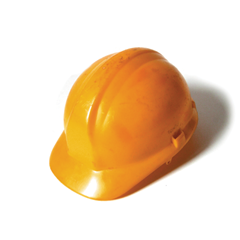Construction update
The first quarter of 2011 saw another drop in building output in Northern Ireland, but growth in infrastructural, industrial and commercial activity.
The construction sector saw a decline of 2.8 per cent in activity during the first three months of this year, according to the latest Northern Ireland Construction Bulletin. The survey, which measures overall and sub-sectoral construction activity, revealed there has been a 13.5 per cent decline in activity between Quarter 1 (January-March) 2010 and Quarter 1 2011.
Three types of construction showed yet another decline in activity during the first quarter of this year. New work, which includes extensions, reconstructions, major alterations as well as site preparation and demolition, declined by 1.8 per cent since October-December 2010, and by 17 per cent over a year. Maintenance works declined by 4.3 per cent, though the measurement over a full year shows a 1.4 per cent increase. Housing output is down 15 per cent in the first quarter, and by 26.1 per cent since Q1 2010.
Several areas of construction activity reveal increases in output.
 Infrastructural construction, which includes private and public works, has seen a 2.6 per cent increase. However, this forms part of a 23.7 per cent decline in output over the past year. Industrial and commercial construction activity (which includes activity in factories, education and health institutions as well as agriculture) increased by 11.6 per cent. Industrial and commercial activity has remained healthy over the past twelve months, with these provisional figures showing a 6.7 per cent increase on Q1 2010.
Infrastructural construction, which includes private and public works, has seen a 2.6 per cent increase. However, this forms part of a 23.7 per cent decline in output over the past year. Industrial and commercial construction activity (which includes activity in factories, education and health institutions as well as agriculture) increased by 11.6 per cent. Industrial and commercial activity has remained healthy over the past twelve months, with these provisional figures showing a 6.7 per cent increase on Q1 2010.
The bulletin also shows Northern Ireland is experiencing a less severe contraction in construction activity at present than the rest of the UK. While the province has seen a much sharper fall overall throughout the recession, the 2.8 per cent decline in the first quarter contrasts with a 4 per cent decrease in Great Britain, with the reduction in new work (-1.8 per cent) lower than the Great Britain rate (-5.1 per cent). Repair and maintenance activity has not declined significantly in Northern Ireland since the recession began at the end of 2008, though it has in the rest of the UK.
Northern Ireland’s total construction output for the first quarter of 2011 was valued at £581 million, revised to £546 million when seasonally adjusted, with private housing (£122.7 million) and new public infrastructural work (£101 million) the two highest value activities (in non-adjusted terms). There were 11,885 firms in the construction industry in March 2010. A large share of firms was either engaged in construction of buildings (2,875) or developing building projects (1,530). 1,345 firms were involved in electrical installation and a further 1,185 engaged in joinery installation.
The Quarterly Employment Survey for Q1 of this year (provisional results) showed 33,530 people are working in the construction sector, a decline of 60 people in the sector on Q4 2010. There are 28,000 self-employed in the sector according to the Northern Ireland Labour Force Survey.
According to the Northern Ireland Annual Survet of Hours and Earnings, construction workers are paid approximately the same as other workers, but work slightly longer hours. The mean gross earnings of full-time male employees in construction in April 2010 was £531 a week, with a further £29 in overtime pay. This is slightly lower than that in all industries and services (£539.30 a week and £13.10 in overtime). Construction workers work 42.6 hours per week (including overtime) compared to 40.9 hours a week in all industries and services.
Meanwhile, revised figures for the final quarter of 2010 show a starker picture for the construction industry than originally envisaged. The decline in construction output on Q3 2010 has been revised upwards from 4.2 per cent to 4.9 per cent.






